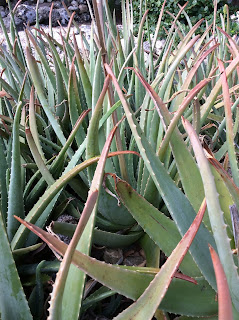Rice Fern (as we call it) is also commonly known as Asparagus Fern, and can be found growing all over Barbados, mainly in gardens. It spreads rapidly and can become a very large cluster of plants quite quickly.
Rice Fern is not actually a fern, and it has tiny little slender leaves about half an inch long that are attached to a long frond that gives the plant a slightly soft and frothy appearance. The plant does not have prickles, but as it ages and dries, the remaining stalks become quite hard, so trimming and thinning them can be a delicate process.
As can be seen in the first photo, Rice Fern produces very delicate little white flowers that transform into green berries that turn red as they ripen. When these berries drop off, they rapidly grow into new plants. If you dig down amongst the roots or are re-potting, you will see many of these berries still attached to the roots.
Rice Fern does well in pots, hanging baskets and in the ground. Due to the hanging nature of the fronds, they are popular in baskets and large pots as they can fill a space beautifully with their lush green foliage.














